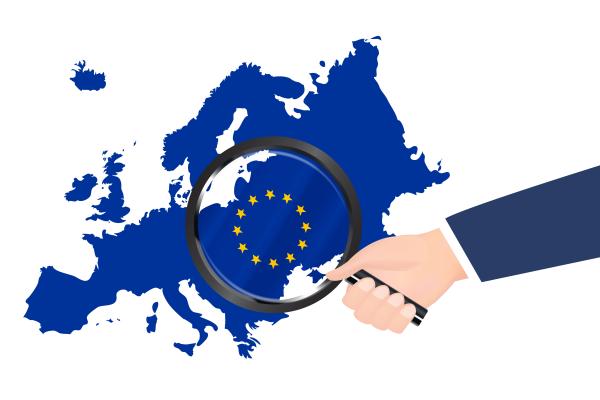
Following the unprecedented crisis caused by the COVID-19 pandemic, Poland’s recovery and resilience plan has responded to the urgent need to foster a strong recovery, while making Poland’s economy and society more resilient and future ready. In response to the energy market disruption caused by Russia's invasion of Ukraine, the Commission launched the REPowerEU Plan. The Recovery and Resilience Facility is at the heart of its implementation and its funding. Under REPowerEU, EU countries are updating their recovery and resilience plans with new measures to save energy and diversify the EU’s energy supplies.
Green transition
Focusing on green technologies and capacities - sustainable mobility, energy efficiency and renewables, climate change adaptation; circular economy; and biodiversity.
Policies for the next generation
Improving access to and the quality of general, vocational, and higher education; focusing on digital education, early childhood education and care; supporting youth employment.
Smart, sustainable, inclusive growth
promoting entrepreneurship, competitiveness, industrialisation; improving the business environment; fostering research, development and innovation, supporting small- and medium-sized businesses.
Digital transformation
Promoting the roll-out of very high-capacity networks, the digitalisation of public services, government processes, and businesses, in particular SMEs; developing basic and advanced digital skills; supporting digital-related R&D and the deployment of advanced technologies.
Social and territorial cohesion
Improving social and territorial infrastructure and services, including social protection and welfare systems, the inclusion of disadvantaged groups; supporting employment and skills development; creating high-quality, stable jobs.
Health and economic, social and institutional resilience
Improving the resilience, accessibility and quality of health and long-term care, including measures to advance their digitalisation; increasing the effectiveness of public administration systems.
The map exclusively serves information purposes and is not an exhaustive database of projects supported by the Recovery and Resilience Facility. It does not reflect the distribution of the projects funded by the Recovery and Resilience Facility across the European Union, nor across different geographical areas or sectors within EU Member States. The RRF funding amounts shown for measures are based on the initial cost estimates included in the recovery and resilience plans.
Furthermore, the projects showcased are without prejudice to any future assessment by the Commission in the context of verifying the satisfactory fulfilment of milestones and targets under Regulation (EU) 2021/241 establishing the Recovery and Resilience Facility.
Country snapshot

The country snapshot illustrates some of the most iconic and impactful projects included in the Polish Recovery and Resilience Plan that will bring positive change for EU citizens, businesses and the EU at large.
The reforms and investments in Poland’s plan are helping it to become more sustainable, resilient and better prepared for the challenges and opportunities of the green transition and digital transition. Following Council approval of Poland’s plan on 17 June 2022, Poland’s recovery and resilience plan was updated on 08 December 2023 also to introduce a REPowerEU chapter.
- 56 investment streams and 55 reforms
- 46.6% of the plan will support the green transition
- 21.3% of the plan will support the digital transition
The transformative impact of Poland’s plan is the result of a strong combination of reforms and investments that address the specific challenges of Poland. The reforms address bottlenecks to lasting and sustainable growth, while investments are targeted at decarbonising the Polish economy, accelerating the digital transition and reinforcing Poland’s economic and social resilience. The plan also intends to strengthen important aspects of the independence of judiciary.
All measures have to be implemented within a tight time frame, as the Regulation establishing the Recovery and Resilience Facility requires all milestones and targets within the national plans to be completed by August 2026.
REPowerEU measures in Poland’s plan
Poland’s plan now includes seven reforms and ten investments to reduce its reliance on fossil fuels, in line with one of the REPowerEU Plan's objectives.
Key measures for REPowerEU
Poland’s REPowerEU chapter aims to increase the resilience of the Polish energy system and to accelerate the green transition of key economic sectors. Firstly, the reform and investment related to energy communities aim to facilitate the deployment of renewable energy sources by such communities, by establishing an enabling, simple and comprehensive framework for and by providing pre-investment support to energy communities. Secondly, the REPowerEU chapter includes reforms aiming to streamline the permitting for renewable energy sources and to accelerate home renovations, thereby accelerating the deployment of renewable energy and boosting energy efficiency in buildings. Thirdly, significant investments in an Energy Support Fund, which will provide financing for a wide range of investments, and in an Offshore Wind Fund, which will incentivise private investment and improve access to finance in Poland’s offshore wind energy sector.
The objective of this reform is to accelerate the deployment of renewable energy sources by streamlining the permitting procedures and enabling a total installed capacity of 30 GW of photovoltaic and onshore wind installation in Poland.
The first part shall consist of the mapping of renewable energy potential for photovoltaic and onshore wind installations. The resulting resources map shall be made publicly available with a view to facilitating the planning and permitting procedures for such installations. The second part shall involve the designation of renewable acceleration areas for photovoltaic and onshore wind installations. The third part of the reform shall consist of the establishment of a single digital framework platform for renewables permitting.
Green transition
In the area of climate and environmental policies, Poland faces the challenge of decarbonisation of the Polish economy and developing sustainable transport.
- The plan supports the green transition by contributing to increasing the share of renewable energy in the energy mix.
- This includes more than €5.1 billion in funding for offshore wind energy plants and terminal infrastructure,
- as well as key changes to the regulatory framework, which will facilitate the construction of onshore wind energy plants.
- The plan also foresees a reform to eliminate bottlenecks for imports of electricity. Moreover, the plan dedicates €3.5 billion to the energy-efficient renovation of buildings and provides €800 million to support the development of green hydrogen technologies.
- The plan also includes investments worth over €7.5 billion in green and smart mobility.
The modified plan, including the REPowerEU chapter, has further strengthened the focus of the plan on the green transition, devoting 46.6% of the available funds to measures that support climate objectives (up from 42.7% in the original plan).
The “Clean Air” programme is Poland’s national subsidy scheme supporting renovations and heat source replacements in single-family houses.
- Project locations
- Poland
Digital transition
Digital challenges for Poland include a lack of universal access to high-speed internet, digitalisation of public services and education, improving digital skills and enhancing cyber-security.
Key measures for the digital transition
- Poland recovery and resilience plan supports the digital transition with investments of €100 million to digitalise public administration with, for instance, the digitisation of invoicing and administrative procedures related to construction and spatial planning. €1.4 billion will be dedicated to ensuring access to high-speed internet in Poland.
- The plan also includes reforms to digitalise education and investments of €1.2 billion in digital infrastructure and equipment for schools, as well as in digital skills of teachers.
- Transformative reforms and investments of €532 million are foreseen to strengthen the State's cybersecurity capacity.
The modified plan has further maintained the focus on the plan on the digital transition, devoting 21.3% of the available funds to measures that support digital objectives.
This investment is expected to increase the number of households covered by fixed broadband network by 931,000 units focusing on white next-generation-access (NGA) areas, where no high-capacity broadband infrastructure currently exists and where the market is not likely to provide end-users in the near future with a network offering connectivity of 100 Mbps download speed. The aim of the measure is to provide at least 80% of Polish households with a capacity of 100 Mbps, with the possibility of increasing it to gigabit capacity.
Economic and social resilience
Key macro-economic challenges for the Polish economy include low labour market participation of women and disadvantaged groups, shortcomings of the healthcare services and a need to improve investment climate.
Key measures in reinforcing economic and social resilience
- The plan reinforces economic and social resilience with measures for further development of childcare and long-term care, which are expected to improve the labour market participation of women.
- The plan also supports the accessibility and effectiveness of the Polish healthcare system, with €4.4 billion of investments in, for instance, support of hospitals and medical universities.
- Several reforms are provided for to improve the investment climate in Poland. This includes a comprehensive reform of the disciplinary regime applicable to Polish judges, which is expected to strengthen important aspects of the independence of the judiciary.

The overarching objective of this investment is to increase the availability of childcare facilities up to the age of three by subsidising the construction of childcare facilities and setting up a uniform financing system of childcare facilities.
- Project locations
- Poland
EUROPEAN SEMESTER
Poland’s plan is consistent with the challenges and priorities identified in the European Semester, the annual cycle of coordination and monitoring of each EU country’s economic policies. For a detailed explanation of the European Semester see the following link: The European Semester explained | European Commission (europa.eu)
National recovery and resilience website
Original Recovery and Resilience Plan (June 2022)
Original Recovery and Resilience Plan (June 2022)
Documents
Council Implementing Decision on the approval of the assessment of the recovery and resilience plan of Poland and Annex
Commission Staff Working Document: Analysis of the recovery and resilience plan of Poland
Press Material
Press release: "European Commission endorses Poland's plan"
Factsheet: Poland’s recovery and resilience plan
Questions and answers: European Commission endorses Poland's plan
Further Information
Presentation to the Council of Poland’s recovery and resilience plan
Summary of the assessment of the Polish recovery and resilience plan
Updated Recovery and Resilience Plan (December 2023)
Documents
Council Implementing Decision amending the Implementing Decision of 17 June 2022 on the approval of the assessment of the recovery and resilience plan for Poland and Annex
Press Material
First payment request
Documents
Commission’s preliminary assessment of Poland’s first payment request
Press Material
Commission receives Poland's first payment request under the Recovery and Resilience Facility

